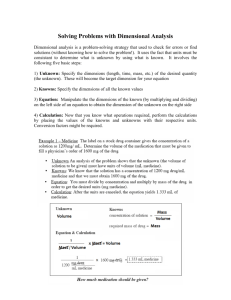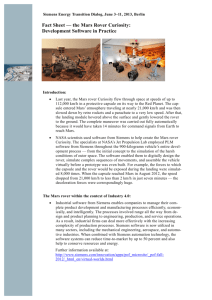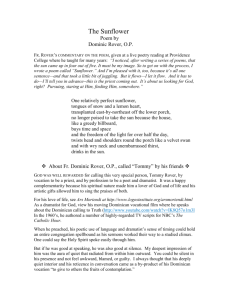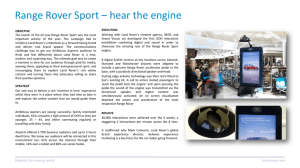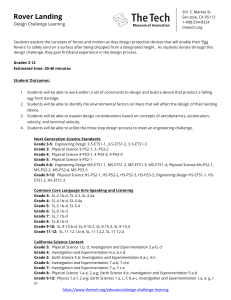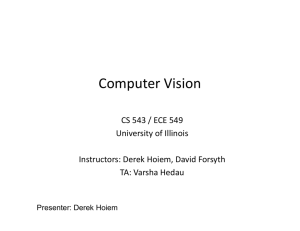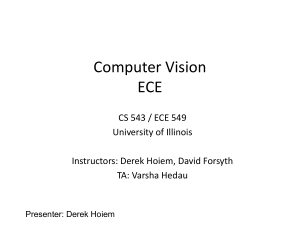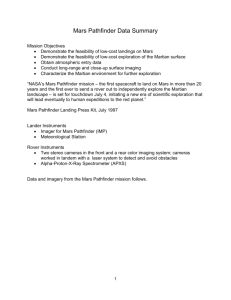mars_lesson_plan
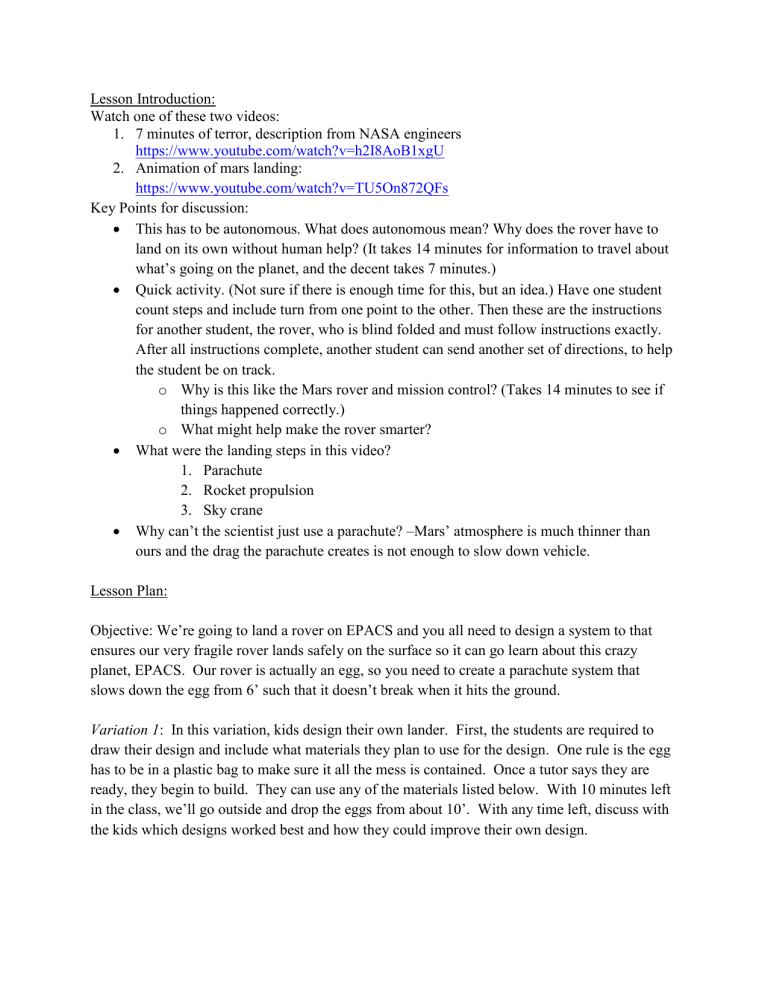
Lesson Introduction:
Watch one of these two videos:
1.
7 minutes of terror, description from NASA engineers https://www.youtube.com/watch?v=h2I8AoB1xgU
2.
Animation of mars landing: https://www.youtube.com/watch?v=TU5On872QFs
Key Points for discussion:
This has to be autonomous. What does autonomous mean? Why does the rover have to land on its own without human help? (It takes 14 minutes for information to travel about what’s going on the planet, and the decent takes 7 minutes.)
Quick activity. (Not sure if there is enough time for this, but an idea.) Have one student count steps and include turn from one point to the other. Then these are the instructions for another student, the rover, who is blind folded and must follow instructions exactly.
After all instructions complete, another student can send another set of directions, to help the student be on track. o Why is this like the Mars rover and mission control? (Takes 14 minutes to see if things happened correctly.) o What might help make the rover smarter?
What were the landing steps in this video?
1.
Parachute
2.
Rocket propulsion
3.
Sky crane
Why can’t the scientist just use a parachute? –Mars’ atmosphere is much thinner than ours and the drag the parachute creates is not enough to slow down vehicle.
Lesson Plan:
Objective: We’re going to land a rover on EPACS and you all need to design a system to that ensures our very fragile rover lands safely on the surface so it can go learn about this crazy planet, EPACS. Our rover is actually an egg, so you need to create a parachute system that slows down the egg from 6’ such that it doesn’t break when it hits the ground.
Variation 1 : In this variation, kids design their own lander. First, the students are required to draw their design and include what materials they plan to use for the design. One rule is the egg has to be in a plastic bag to make sure it all the mess is contained. Once a tutor says they are ready, they begin to build. They can use any of the materials listed below. With 10 minutes left in the class, we’ll go outside and drop the eggs from about 10’. With any time left, discuss with the kids which designs worked best and how they could improve their own design.
Possible materials: Plastic bags, Paper clips, Drinking straws, Popsicle or craft sticks, String,
Masking tape, Rubber bands, Pipe cleaners, Paper, Bubble wrap, Styrofoam, Balloons, Plastic
Bags, Scissors, Ruler, Eggs
Variation 2 : This variation is already defined design, modeled after the Pathfinder method of landing. A template for cutting out a equilateral triangle is give. Students cut this template out from a cereal box and fold it up to build a tetrahedral. The egg will go inside this lander (inside a plastic bag.) Next build a parachute out of newspaper, and tie it to the lander with string. Finally, tape balloons on each side of the tetrahedral to act as air bags. Once this is done, it’s time to test.
Again, drop from 10’ outside.
Needed Materials: Cardboard cereal boxes, newspaper, masking tape, string, balloons, plastic bag, egg, scissors
